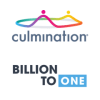Women with a type of advanced breast cancer unsuited to drugs like Roche's Herceptin lived significantly longer when given targeted therapies made by Novartis and Eli Lilly, new study results showed.
The data, unveiled Sunday at the European Society of Medical Oncology's annual meeting in Barcelona, Spain, could convince doctors to more readily prescribe the Novartis and Lilly drugs over hormone therapy, a commonly used treatment.
"For the last four decades, since the introduction of hormonal therapy, we've been mixing and matching the different kinds of hormonal therapies and scheduling them differently," said Dennis Slamon, director of clinical research at the University of California, Los Angeles Jonsson Comprehensive Cancer Center, in an interview ahead of the conference.
"But all the attacks we were taking were directed at the estrogen receptor and the estrogen pathway," he added, describing the mechanism by which hormone, or endocrine, therapy slows tumor growth.
Novartis' Kisqali and Lilly's Verzenio offer a different approach, one designed to interrupt tumor cell cycle and proliferation. Both inhibit enzymes called cyclin-dependent kinases and are part of a drug class that also includes Pfizer's Ibrance, one of the top-selling cancer drugs on the market.
All three — Kisqali, Verzenio and Ibrance — are already approved in the U.S. on the basis of results showing each lengthen the time before cancers begin to grow again. Until this summer, however, none of the drugs were supported with clinical data showing a survival advantage over older treatments.
Results from a Novartis trial, called MONALEESA-3, and another from Lilly, dubbed MONARCH-2, are the second and third time the drugs have been proven to help women with metastatic breast cancer that's hormone receptor positive, but HER2 negative, live longer.
The first was another Novartis study, disclosed in June, that tested Kisqali in younger, premenopausal women whose tumors shared the same characteristics.
MONALEESA-3 and MONARCH-2 were previously declared a success, and stopped early due to the two drugs' respective benefit. No detailed data were available until Sunday, however, when investigators for each study presented results to oncologists gathered in Barcelona for ESMO.
Kisqali and Verzenio were both combined with the hormone treatment fulvestrant, and compared against fulvestrant alone in postmenopausal women with HR+/HER2- metastatic breast cancer.
Patients given Kisqali plus fulvestrant were nearly 28% less likely to die then those treated with just fulvestrant, a relative risk reduction that edged ahead of the 24% posted by Verzenio in Lilly's study.
Phase 3 studies of CDK 4/6 inhibitors with fulvestrant
| Study name | Comparison | Overall survival (% risk reduction) |
|---|---|---|
| MONALEESA-3 | Kisqali + fulvestrant vs. fulvestrant | Not reached vs. 40.0 months (27.6%) |
| MONARCH 2 | Verzenio + fulvestrant vs. fulvestrant | 46.7 months vs. 37.3 months (24.3%) |
| PALOMA-3 | Ibrance + fulvestrant vs. fulvestrant | 34.9 months vs. 28.0 months (19%)*** |
NOTE: MONALEESA-3 also included women not previously treated. SOURCE: Company releases ***Not a significant result
While the studies shared similarities, Novartis' included women never before treated as well as those who had relapsed or progressed on other treatment. Lilly's only enrolled women previously treated with endocrine therapy, but also allowed participants who were pre- or peri-menopausal — a group tested in Novartis' earlier, MONALEESA-7 study.
Both drugs come with a range of side effects, including diarrhea for Verzenio and, in a small number of patients, a heart rhythm disruption called QTc prolongation for Kisqali. Each can be managed, but may affect how readily doctors prescribe.
Earlier this month, the Food and Drug Administration also warned of rare, but severe, lung inflammation that CDK 4/6 inhibitors can cause. The agency said the benefits of treatment still outweighed the risks.
Still, the clear survival advantage should boost adoption, and build confidence in the drug class as a group.
"I think there will be some shifts in prescribing," said Slamon, who led Novartis' study and works with Lilly and Pfizer as well.
"It may be less so in the U.S. — although it will also be there — but I think it will be more predominant in Europe and other parts of the world," he added, citing varying physician habits.
Roughly 30% of all breast cancers diagnosed in the U.S. become metastatic, and as many as 10% of newly identified tumors are already advanced, according to data cited by Lilly.
In marketing Kisqali and Verzenio, though, Novartis will be working against market leader Ibrance.
Since its approval in 2015, Ibrance has quickly become a top drug for Pfizer, and makes about $1 billion every quarter. Kisqali and Verzenio, by contrast, are relatively minor contributors to their respective makers' bottom lines.

Crucially, Ibrance failed to show a statistically significant benefit on survival in a study called PALOMA-3 — a fact that might work in Kisqali and Verzenio's favor.
"I think physicians are used to using Ibrance and I think this is something that we're going to have the break the habit of," said John Tsai, Novartis chief medical officer, on a call with reporters before the ESMO conference.
"We're hoping this will convince physicians to actually use [Kisqali] versus the other agents."






















